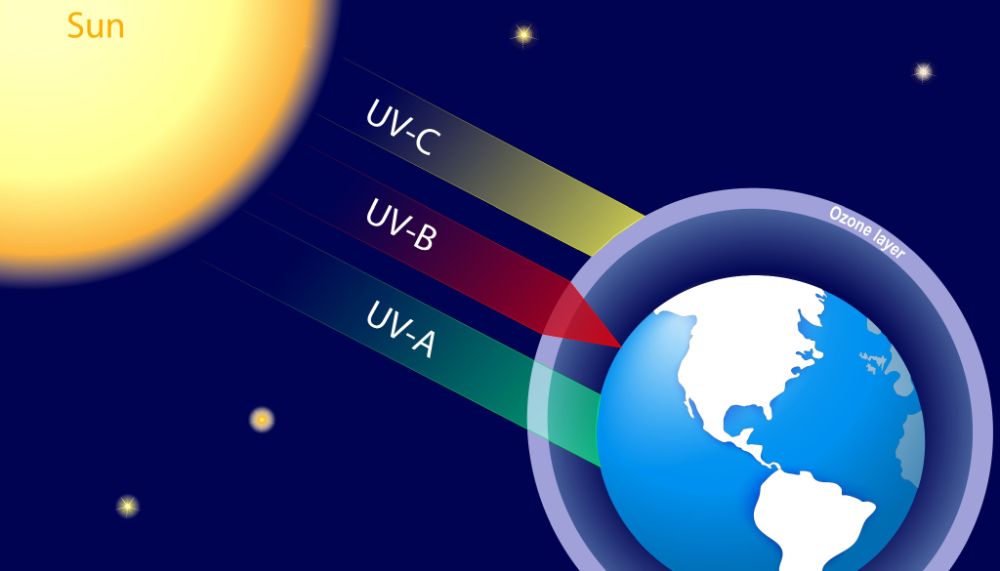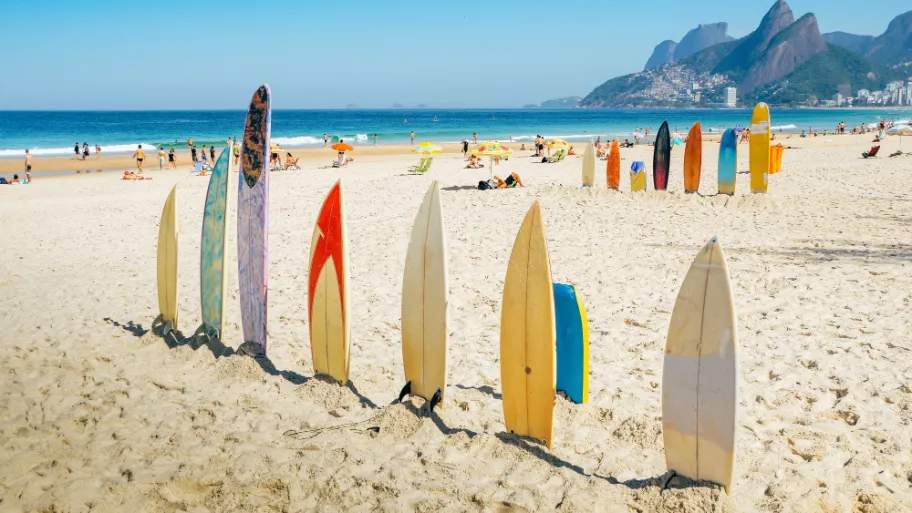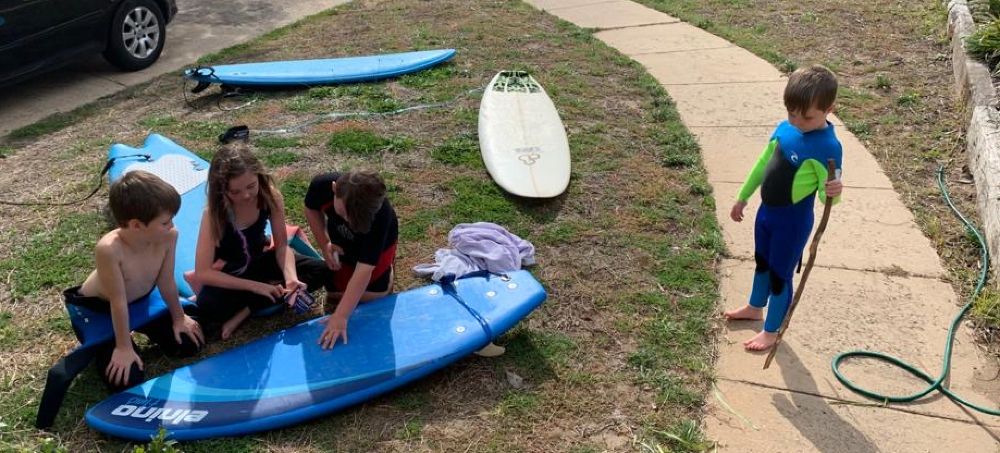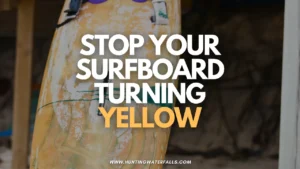I love surfing, but I hate seeing my surfboards turn yellow over time. This may not affect the performance of the board, but it looks bad, seeing my once bright board turn a dingy, dull yellow.
I decided to get to the bottom of what caused this yellowing so I could know how to counteract it and whether or not it's possible to either keep your board white forever or to even reverse the yellowing process if possible.
Surfboards turn yellow for two main reasons: exposure to ultraviolet (UV) rays and heat. Ultraviolet rays react with the chemical compounds found in the majority of surfboards and cause them to oxidize, gradually turning the board yellow.
Heat plays a similar role, in a process called exotherm. Exotherm causes a reaction that affects the molecular structure of the surfboard’s materials, turning the board yellow over time.
The process by which surfboards turn yellow is the same as the one that causes us to get sunburned or clothes to fade in the sun.
While some yellowing is inevitable there are ways that you can minimize the yellowing of your board and keep it that fresh new-board white for longer. But first you've got to understand why it happens.
Ultraviolet Rays Are The Most Common Cause Of Yellowing

Most people surf in places with frequent sunny weather, such as Hawaii or California. I know that I surf a lot more in the summer months than the winter months.
This prolonged exposure to the sun leaves the surfboard open to being bombarded with UV rays.
The UV rays are charged with energy which, when it comes into contact with the molecular structure of the compounds used on the board, causes individual molecules to break loose.
Molecular Structures Of Resins Used In Making Surfboards

There are two kinds of molecular structures, aliphatic (which are strong) and aromatic (which are weaker).
Aliphatic structures are found in substances such as urethane (the foam used in boards to make them float).
Aromatic structures are found in the vast majority of epoxies.
Surfboard shapers tend to favor epoxies because they are cheaper and make for a lighter board. However, they are more susceptible to yellowing because of their weaker chemical structure.
Free Radicals And Oxidization
When a UV ray comes into contact with the molecular structure of the epoxy, it breaks off individual molecules of carbon. These broken-off molecules are what are known as free radicals. The free radicals then drift around, eventually latching on to oxygen molecules.
Sound similar to how people talk about sun exposure and skin cancer? That's because just like how the UV rays damage your skin they also damage the chemical composition of your surfboard.
The new compound created by this fusion produces a yellowish tint. You’ve seen this same process in action when iron rusts. Only in this case, the properties of the iron cause it to turn to that reddish rust hue instead of yellow.
Heat Also Has A Role In Turning Surfboards Yellow
Heat also plays a significant role in yellowing a surfboard. Some surfers have found that boards they kept away from the sun, but in hot conditions, have turned yellow. Some of these boards even yellowed faster than those exposed to UV rays (but not as much heat).
This means leaving your board inside a hot shed or hot garage won't save it from yellowing and could actually speed up the process even more.
This surfboard yellowing occurred because of the process of exotherm. Exotherm refers to the heat released when urethanes and epoxies that are used on the surface of the board cure or harden.
The heat causes the same breakdown in the molecular structure of the resins used for the board. The foam core of the board will also release gasses when exposed to too much heat, which, when trapped inside the board, will oxidize and yellow.
Of course, this doesn’t mean that your board will release gas clouds or noxious vapors. It will only reach that point if it begins to burn, which ordinary sunlight or ambient heat will not cause.
Mass-Produced Surfboards Vs. Custom-Made Surfboards
You may have noticed that mass-produced boards tend to yellow faster than custom-made ones. This is because there is less care taken to regulate the temperature when mixing the epoxy for the boards. The machines mix the materials at a much faster rate, which means an increase in temperatures, too.
A hand-crafted board, on the other hand, will not be mixed so rapidly. Most surfboard shapers will be much more meticulous when mixing their epoxies, keeping the overall temperature lower.
Polyurethane (PU or Fiberglass) Boards
Surfboards made with urethane (aka polyurethane or fiberglass) will also turn yellow but at a slower rate. Their aliphatic molecular structure is stronger, but not impervious to the effects of UV rays and heat.
UV-Resistant Compounds
Many surfboard manufacturers are also using new compounds formulated to have a higher resistance to UV rays and heat. These compounds will slow the yellowing process, but, ultimately, there is no way to prevent yellowing entirely.
Scratches And Dings
A surfboard with scratches and dings in it may turn yellow faster.
These scuffs, if deep enough, will expose more surface area to oxygen. If deep enough, they will also expose the foam core, which no longer has the protective resins that slow the yellowing process.
White Surfboards Turn Yellow Faster (vs Colored Boards)

White surfboards will turn yellow at a faster rate. All surfboards, regardless of color, are exposed to the same chemical processes.
The only difference is that white surfboards do not have other hues to help hide the gradual oxidization.
Even colorful boards will, given enough time, start to fade and take on a yellowish tint.
How To Stop Your Surfboard Getting Yellow
Your surfboard is going to get yellow over time as the chemicals in it break down. Unfortunately this process is unavoidable.
However, you can slow the yellowing process pretty significantly by taking good care of your board.
Here are some of the best things you can do to slow the yellowing process.
Store Your Board Out Of Direct Sunlight

Direct sunlight and UV rays are the #1 cause of surfboard yellowing.
While you can't avoid the sun while you're out there catching waves you can store your board out of the sun when you're done.
Avoid leaving your board in the beach in the sun or in the backyard in the sun for any length of time. Find a shady spot for it or throw it in a board bag to reduce the yellowing effect of UV rays.
Invest In An Insulated Board Bag
An insulated board bag will both protect your board from harmful UV rays but it'll also help reduce it's exposure to heat.
It acts like a cooler bag and so your board won't warm up as quickly if it's sitting in the sun or in a hot car. There aren't perfect though and heat will still get through eventually so it's still best to leave your board out of hot places wherever possible.
Store Your Board In A Cool Area
While the backyard shed might be out of the way it's not going to be the best place to store your board because in the summer months these non-insulated rooms get so hot in the sun that they will bake your board and cause it to turn yellow.
Try to store your board in a cool spot. Some garages are cool while some are hot.
The basement, under your house or even under your bed can all be other cool spots to store your board.
Don't Leave Your Board In Your Hot Car
We've all done it. Gone for a surf in the morning and then left our board in the car baking in the sun all day.
This is a surefire way to make it turn yellow really quickly.
Where possible avoid storing your board in your car for long periods of time if your car is going to be in the sun.




